Asus 2015 Annual Report Download - page 249
Download and view the complete annual report
Please find page 249 of the 2015 Asus annual report below. You can navigate through the pages in the report by either clicking on the pages listed below, or by using the keyword search tool below to find specific information within the annual report.-
 1
1 -
 2
2 -
 3
3 -
 4
4 -
 5
5 -
 6
6 -
 7
7 -
 8
8 -
 9
9 -
 10
10 -
 11
11 -
 12
12 -
 13
13 -
 14
14 -
 15
15 -
 16
16 -
 17
17 -
 18
18 -
 19
19 -
 20
20 -
 21
21 -
 22
22 -
 23
23 -
 24
24 -
 25
25 -
 26
26 -
 27
27 -
 28
28 -
 29
29 -
 30
30 -
 31
31 -
 32
32 -
 33
33 -
 34
34 -
 35
35 -
 36
36 -
 37
37 -
 38
38 -
 39
39 -
 40
40 -
 41
41 -
 42
42 -
 43
43 -
 44
44 -
 45
45 -
 46
46 -
 47
47 -
 48
48 -
 49
49 -
 50
50 -
 51
51 -
 52
52 -
 53
53 -
 54
54 -
 55
55 -
 56
56 -
 57
57 -
 58
58 -
 59
59 -
 60
60 -
 61
61 -
 62
62 -
 63
63 -
 64
64 -
 65
65 -
 66
66 -
 67
67 -
 68
68 -
 69
69 -
 70
70 -
 71
71 -
 72
72 -
 73
73 -
 74
74 -
 75
75 -
 76
76 -
 77
77 -
 78
78 -
 79
79 -
 80
80 -
 81
81 -
 82
82 -
 83
83 -
 84
84 -
 85
85 -
 86
86 -
 87
87 -
 88
88 -
 89
89 -
 90
90 -
 91
91 -
 92
92 -
 93
93 -
 94
94 -
 95
95 -
 96
96 -
 97
97 -
 98
98 -
 99
99 -
 100
100 -
 101
101 -
 102
102 -
 103
103 -
 104
104 -
 105
105 -
 106
106 -
 107
107 -
 108
108 -
 109
109 -
 110
110 -
 111
111 -
 112
112 -
 113
113 -
 114
114 -
 115
115 -
 116
116 -
 117
117 -
 118
118 -
 119
119 -
 120
120 -
 121
121 -
 122
122 -
 123
123 -
 124
124 -
 125
125 -
 126
126 -
 127
127 -
 128
128 -
 129
129 -
 130
130 -
 131
131 -
 132
132 -
 133
133 -
 134
134 -
 135
135 -
 136
136 -
 137
137 -
 138
138 -
 139
139 -
 140
140 -
 141
141 -
 142
142 -
 143
143 -
 144
144 -
 145
145 -
 146
146 -
 147
147 -
 148
148 -
 149
149 -
 150
150 -
 151
151 -
 152
152 -
 153
153 -
 154
154 -
 155
155 -
 156
156 -
 157
157 -
 158
158 -
 159
159 -
 160
160 -
 161
161 -
 162
162 -
 163
163 -
 164
164 -
 165
165 -
 166
166 -
 167
167 -
 168
168 -
 169
169 -
 170
170 -
 171
171 -
 172
172 -
 173
173 -
 174
174 -
 175
175 -
 176
176 -
 177
177 -
 178
178 -
 179
179 -
 180
180 -
 181
181 -
 182
182 -
 183
183 -
 184
184 -
 185
185 -
 186
186 -
 187
187 -
 188
188 -
 189
189 -
 190
190 -
 191
191 -
 192
192 -
 193
193 -
 194
194 -
 195
195 -
 196
196 -
 197
197 -
 198
198 -
 199
199 -
 200
200 -
 201
201 -
 202
202 -
 203
203 -
 204
204 -
 205
205 -
 206
206 -
 207
207 -
 208
208 -
 209
209 -
 210
210 -
 211
211 -
 212
212 -
 213
213 -
 214
214 -
 215
215 -
 216
216 -
 217
217 -
 218
218 -
 219
219 -
 220
220 -
 221
221 -
 222
222 -
 223
223 -
 224
224 -
 225
225 -
 226
226 -
 227
227 -
 228
228 -
 229
229 -
 230
230 -
 231
231 -
 232
232 -
 233
233 -
 234
234 -
 235
235 -
 236
236 -
 237
237 -
 238
238 -
 239
239 -
 240
240 -
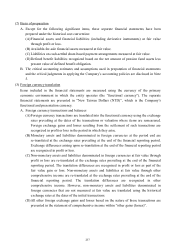 241
241 -
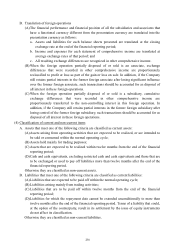 242
242 -
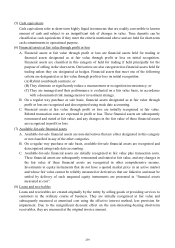 243
243 -
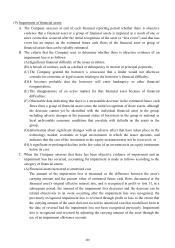 244
244 -
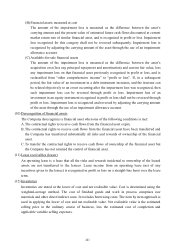 245
245 -
 246
246 -
 247
247 -
 248
248 -
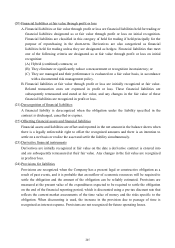 249
249 -
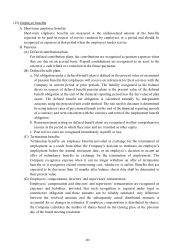 250
250 -
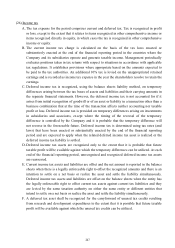 251
251 -
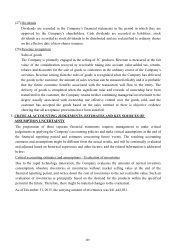 252
252 -
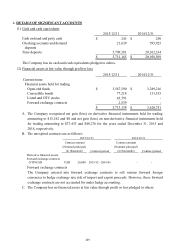 253
253 -
 254
254 -
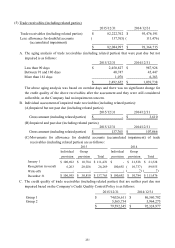 255
255 -
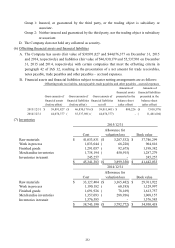 256
256 -
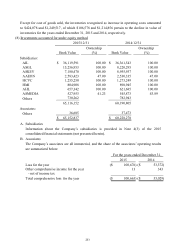 257
257 -
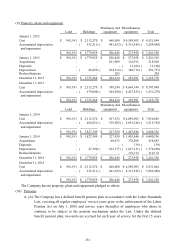 258
258 -
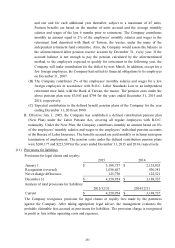 259
259 -
 260
260 -
 261
261 -
 262
262 -
 263
263 -
 264
264 -
 265
265 -
 266
266 -
 267
267 -
 268
268 -
 269
269 -
 270
270 -
 271
271 -
 272
272 -
 273
273 -
 274
274 -
 275
275 -
 276
276 -
 277
277 -
 278
278 -
 279
279
 |
 |

245
(20) Financial liabilities at fair value through profit or loss
A. Financial liabilities at fair value through profit or loss are financial liabilities held for trading or
financial liabilities designated as at fair value through profit or loss on initial recognition.
Financial liabilities are classified in this category of held for trading if held principally for the
purpose of repurchasing in the short-term. Derivatives are also categorized as financial
liabilities held for trading unless they are designated as hedges. Financial liabilities that meet
one of the following criteria are designated as at fair value through profit or loss on initial
recognition:
(A) Hybrid (combined) contracts; or
(B) They eliminate or significantly reduce a measurement or recognition inconsistency; or
(C) They are managed and their performance is evaluated on a fair value basis, in accordance
with a documented risk management policy.
B. Financial liabilities at fair value through profit or loss are initially recognized at fair value.
Related transaction costs are expensed in profit or loss. These financial liabilities are
subsequently remeasured and stated at fair value, and any changes in the fair value of these
financial liabilities are recognized in profit or loss.
(21) Derecognition of financial liabilities
A financial liability is derecognized when the obligation under the liability specified in the
contract is discharged, cancelled or expires.
(22) Offsetting financial assets and financial liabilities
Financial assets and liabilities are offset and reported in the net amount in the balance sheets when
there is a legally enforceable right to offset the recognized amounts and there is an intention to
settle on a net basis or realize the asset and settle the liability simultaneously.
(23) Derivative financial instruments
Derivatives are initially recognized at fair value on the date a derivative contract is entered into
and are subsequently remeasured at their fair value. Any changes in the fair value are recognized
in profit or loss.
(24) Provisions for liabilities
Provisions are recognized when the Company has a present legal or constructive obligation as a
result of past events, and it is probable that an outflow of economic resources will be required to
settle the obligation and the amount of the obligation can be reliably estimated. Provisions are
measured at the present value of the expenditures expected to be required to settle the obligation
on the end of the financial reporting period, which is discounted using a pre-tax discount rate that
reflects the current market assessments of the time value of money and the risks specific to the
obligation. When discounting is used, the increase in the provision due to passage of time is
recognized as interest expense. Provisions are not recognized for future operating losses.
